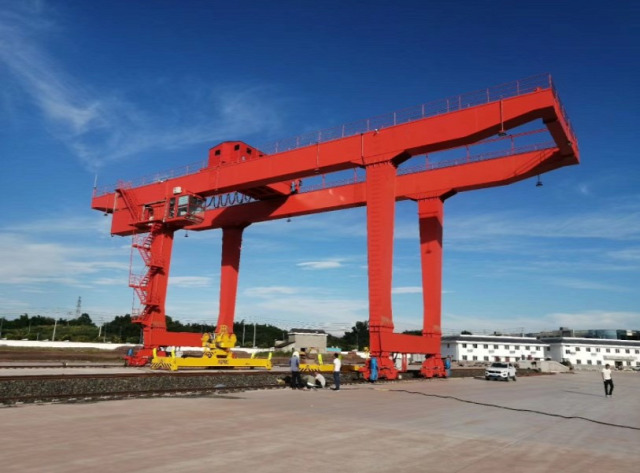Rail-mounted gantry cranes (RMGs) have revolutionized the railway industry by providing efficient and versatile solutions for cargo handling in railway yards. These cranes, specifically designed to operate on dedicated tracks, offer exceptional mobility, precision, and lifting capacity. In this article, we will explore the various uses of rail-mounted gantry cranes in railway yard applications, highlighting their importance in optimizing operations and improving efficiency.

Container Handling
One of the primary uses of rail-mounted container gantry cranes in railway yards is the efficient handling of containers. With the increasing reliance on containerized cargo transportation, RMGs play a crucial role in loading and unloading containers from railcars. These cranes feature specialized spreader beams that can securely grip and lift containers of various sizes and weights.
Rail-mounted gantry cranes allow for seamless transfer of containers between railcars, trucks, and storage areas within the railway yard. They contribute to the efficient organization and stacking of containers, optimizing space utilization and improving the overall flow of containerized cargo operations.
Bulk Cargo Operations
RMGs are also widely utilized for handling bulk cargo within railway yards. Bulk materials such as coal, grains, ores, and aggregates require specialized equipment for efficient loading and unloading. Rail-mounted gantry cranes provide the necessary lifting capacity and control to handle these heavy and often challenging-to-manage cargoes.
By using specialized grabs or hoppers, RMGs can efficiently load bulk materials into railcars or unload them from incoming trains. The precise control offered by these cranes ensures accurate placement of the cargo and minimizes spillage or damage during the handling process. This capability enhances productivity and safety in bulk cargo operations within railway yards.
Intermodal Operations
Rail-mounted gantry cranes play a significant role in facilitating intermodal operations within railway yards. Intermodal facilities serve as key hubs for transferring cargo between different modes of transportation, such as trains, trucks, and ships. RMGs enable the seamless transfer of containers or other intermodal units from railcars to trucks or vice versa.
These cranes provide the necessary lifting and positioning capabilities to efficiently transfer cargo containers between various transportation modes. By eliminating the need for manual labor or additional equipment, RMGs streamline the intermodal handling process, reducing downtime and optimizing the overall efficiency of intermodal operations within railway yards.
Maintenance and Repair Activities
In addition to cargo handling, rail-mounted gantry cranes are instrumental in maintenance and repair activities within railway yards. These railroad gantry cranes can lift and position heavy railway equipment, such as locomotives, bogies, and wagons, for inspection, maintenance, or repair purposes. Their versatility allows for precise positioning and manipulation of equipment, facilitating efficient access to critical components.
RMGs provide a safe and reliable solution for lifting heavy loads during maintenance or repair operations. They enable technicians and engineers to work on railway equipment at elevated heights, ensuring effective maintenance procedures and minimizing operational disruptions within the railway yard.
Conclusion
Rail-mounted gantry cranes have diverse uses in railway yard applications, offering unparalleled efficiency, versatility, and precision in cargo handling. From container operations to bulk cargo handling, intermodal transfers, and maintenance activities, RMGs play a vital role in optimizing operations within railway yards.
By providing the necessary lifting capacity, mobility, and control, these cranes streamline cargo handling processes, reduce downtime, and enhance overall productivity. The adaptability of rail-mounted gantry cranes makes them indispensable equipment in railway yards, enabling the efficient flow of goods, ensuring safe and reliable operations, and contributing to the success of the railway industry as a whole.

